| Travel Photos Home Page |
Lan Tau Island, Oct 2018
|
||||
|
To return to the Paintings section of this website, please CLICK HERE
|
|||
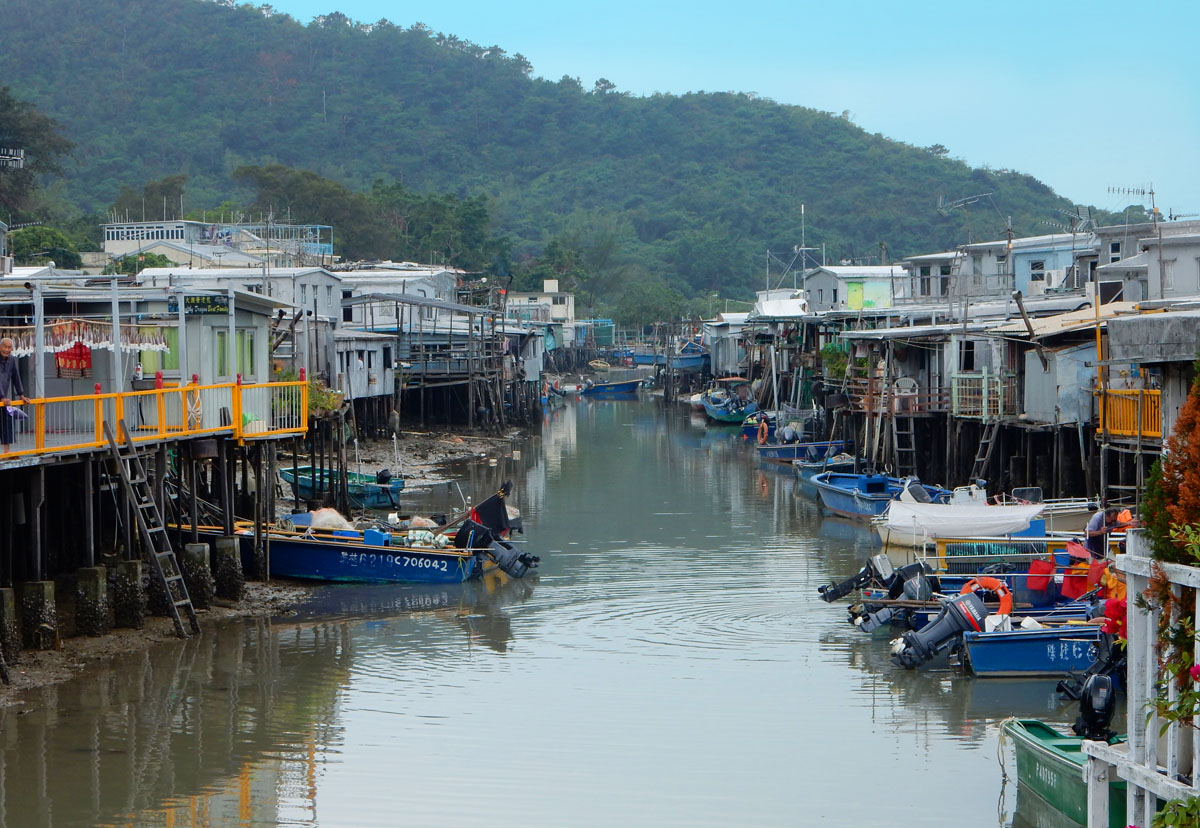 |
|||
| I had visited the interesting fishing village of Tai O on Lan Tau Island several times before, but this time, instead of taking the bus, I decided to do the "Boy Scout Thing" and walk the Ancient Trail from Tung Chung to Tai O. It was a reasonably difficult hike which took me about 3.5 hours to finish.
I would describe myself as an ambler, rather than a hiker. The hikers usually do it in about 2.5 hours. |
|||
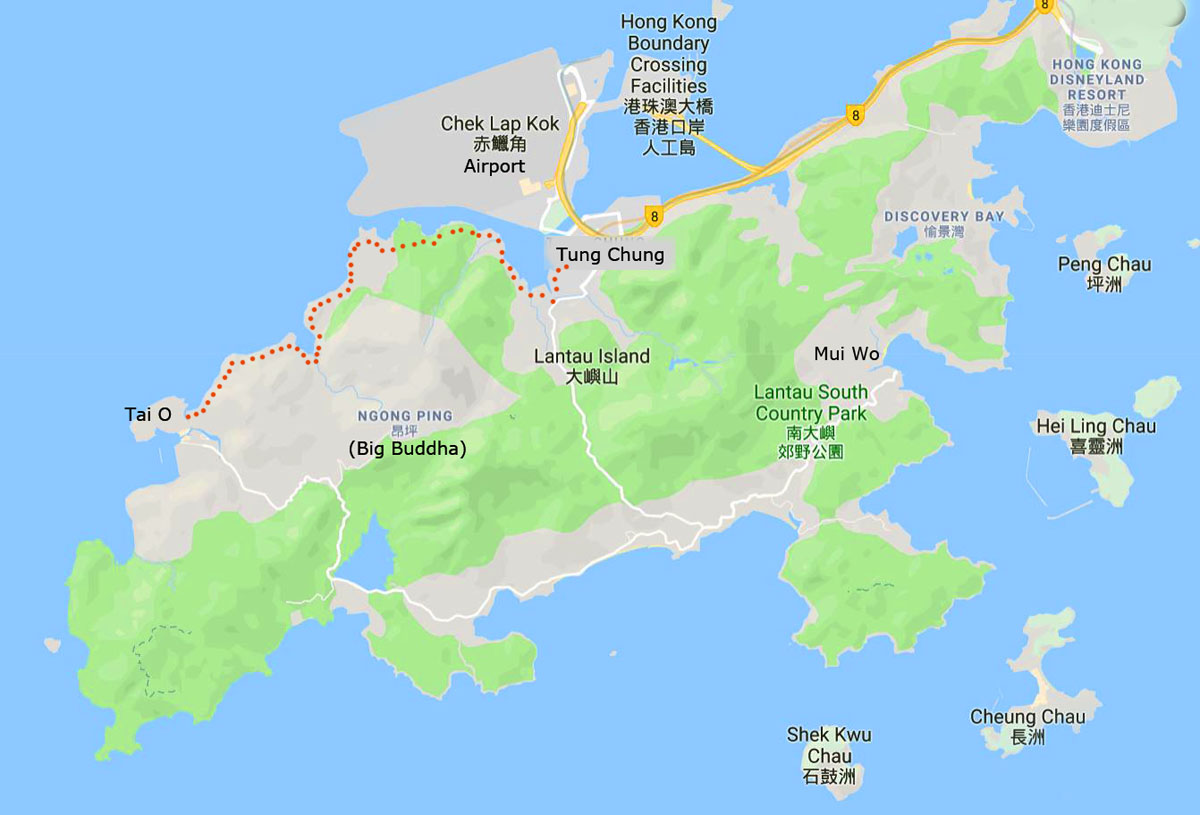 |
|||
| This map shows the island of Lan Tau, with a few smaller islands East of it. At the top of the map is the new airport at Chek Lap Kok.
Tung Chung is the last MTR station on the Tung Chung line from Central. The little red dots show the Ancient Trail from Tung Chung to Tai O. The Big Buddha is in the village of Ngong Ping, high up in the mountains. I also visited Mui Wo on a separate trip, and that village is on the Eastern coast of Lan Tau Island. |
|||
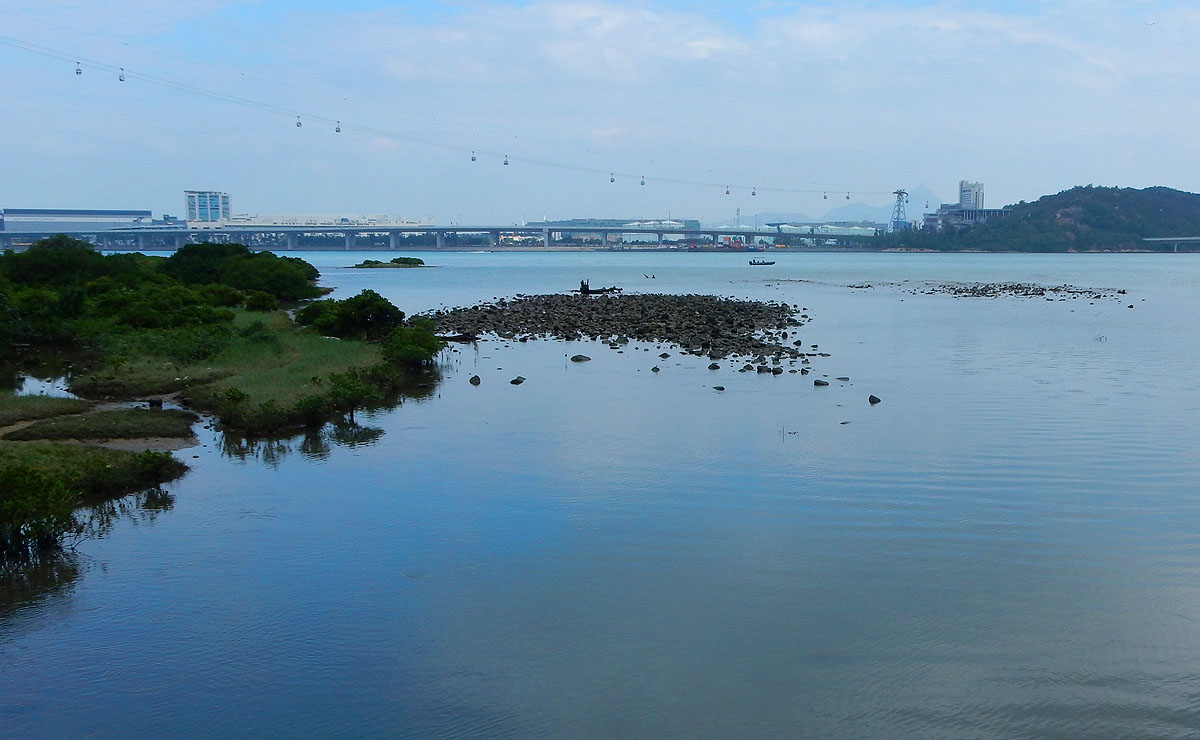 |
|||
| It took me a while to find the trail after leaving the MTR Station at Tung Chung. Following the sound advice of the Boy Scouts, I kept asking the locals for directions. Soon I was on my way along the Northern shores of Lan Tau.
In this photo you can see the airport and the 360 Cable Cars up in the air, on their way to Ngong Ping and the Big Buddha. You can also see the spans of the bridge which is the start of the recently opened Hong Kong to Macau Bridge, which is 55 kms long. |
|||
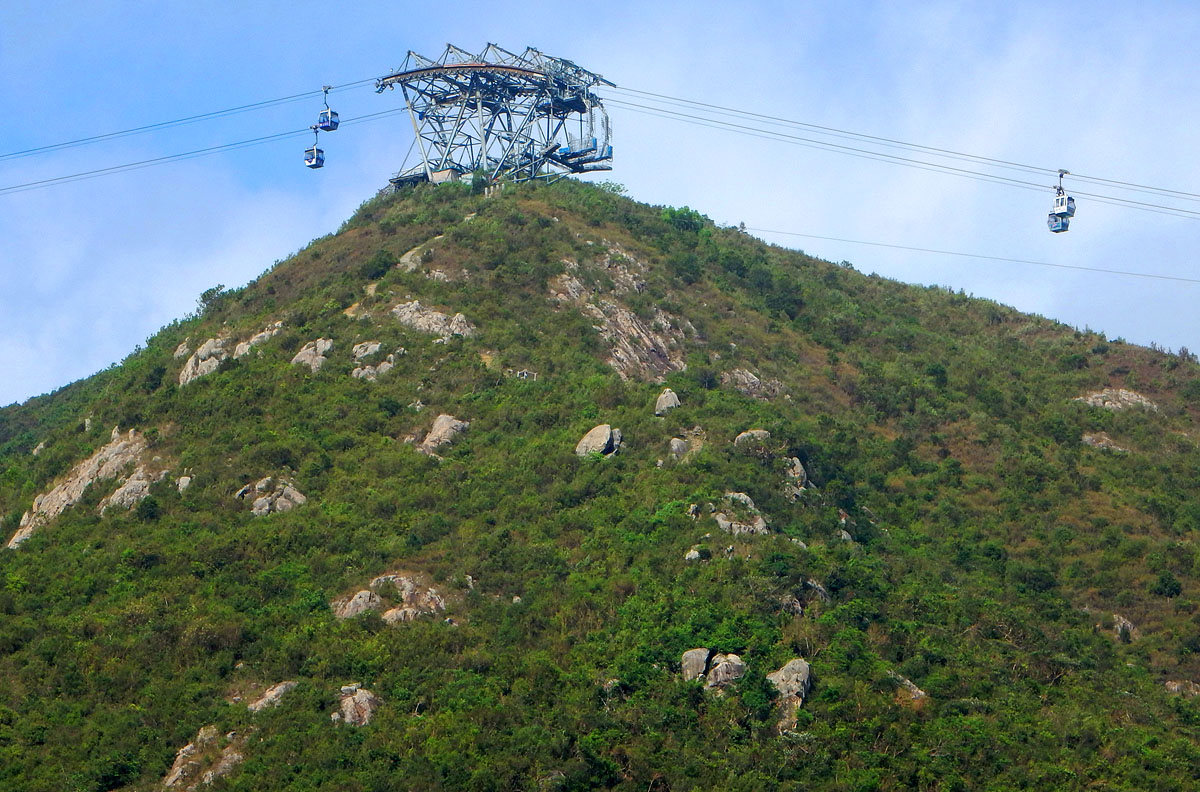 |
|||
| Lan Tau is very mountainous. Here we see the Cable Cars heading over one of the lesser peaks on their way to the Big Buddha.
The Ancient Trail to Tai O tends to follow the shoreline, and it does not climb to the tops of any of the peaks. However, the trail does ascend on a few occasions across high saddles between mountains, which provides excellent cardio exercise for ancient amblers like me. |
|||
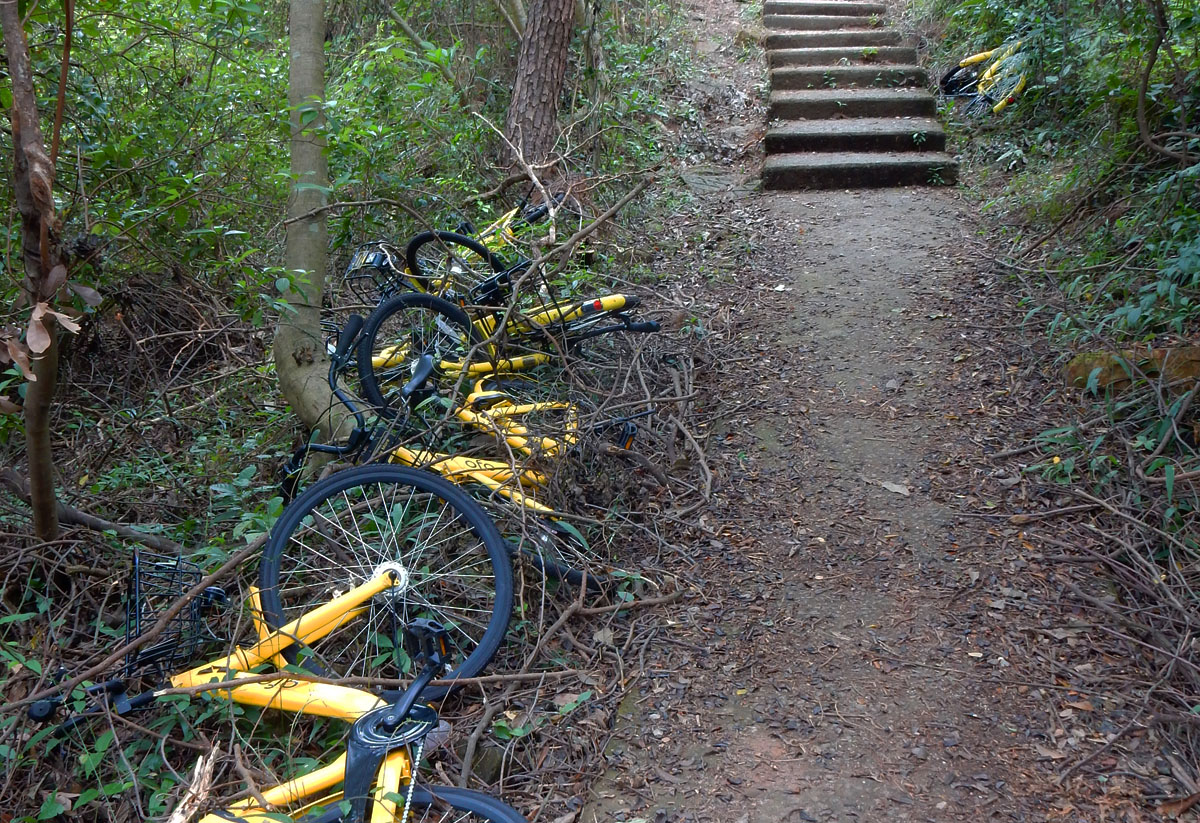 |
|||
| I was amused to see these abandoned bikes at the foot of the very first steep climb up to a saddle between two peaks.
At this stage of the Trail, the path had gone away from the sea shore for quite some distance. |
|||
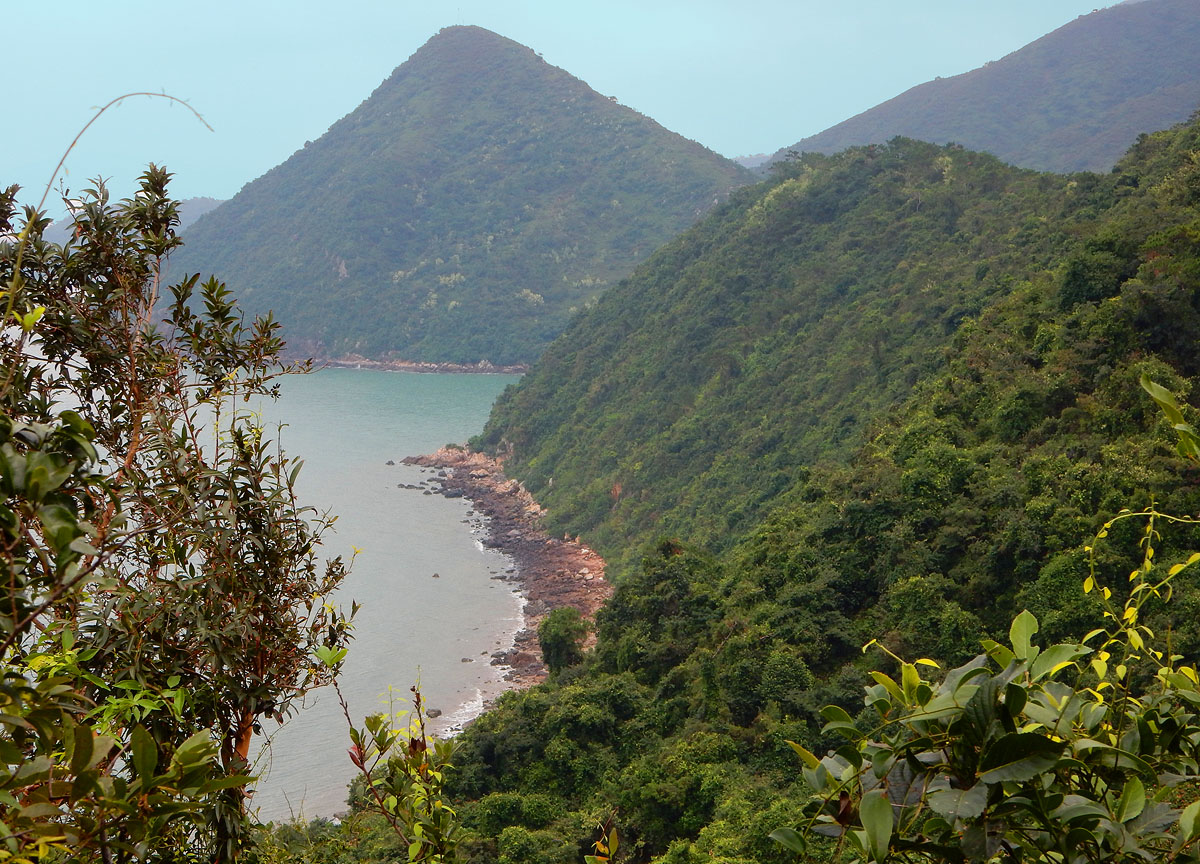 |
|||
| As one can see, the Ancient Trail often goes quite high up over the saddles.
Hong Kong and its islands are now clothed in jungle green. When I was a kid in the 1940s, most of the hills and mountains in the old Colony were quite bare. During the War, most of the trees had been chopped down for firewood. It was a common sight then to see men and women carrying two loads of firewood slung onto a long, thick, bamboo pole, and carried on the shoulder. |
|||
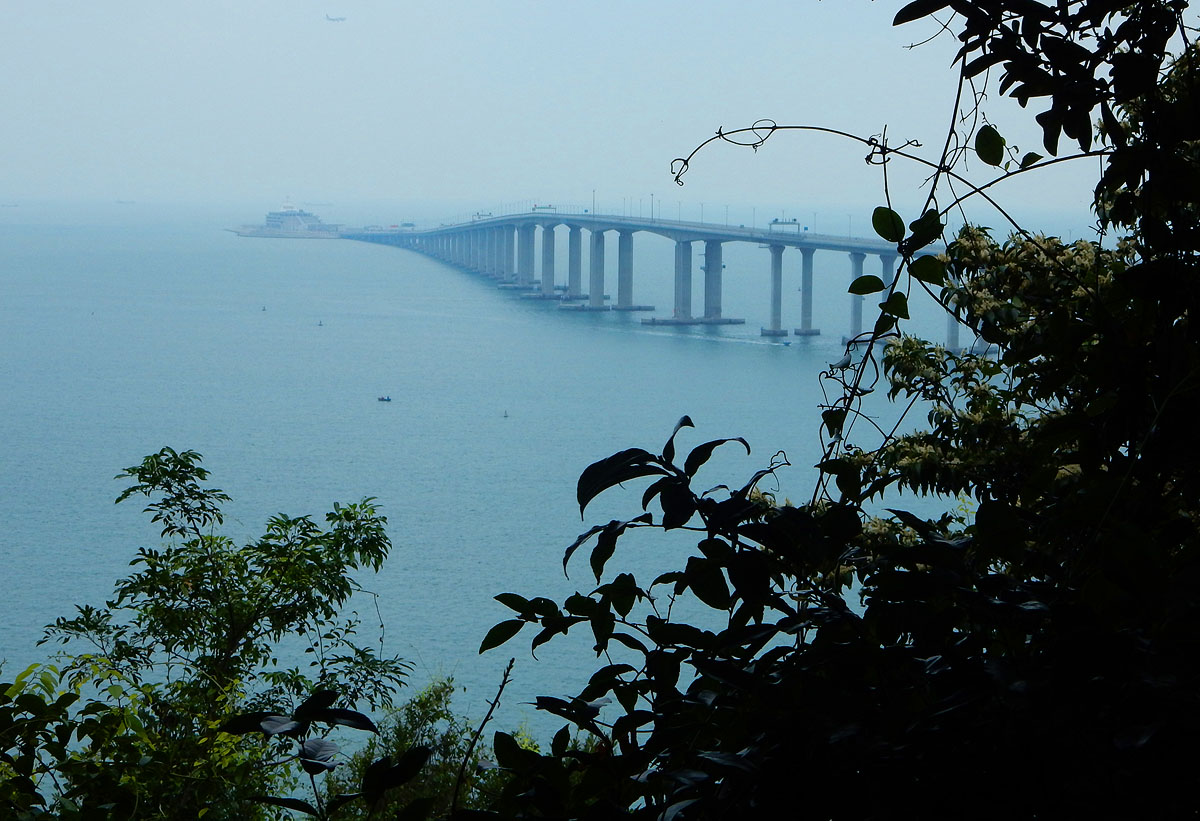 |
|||
| The new bridge between Hong Kong, Zhuhai and Macau has two artificial islands where the road goes underwater for 6.7 kms. This allows large ships to enter and exit the Pearl River Estuary without posing any threat to the bridge elements of the crossing. | |||
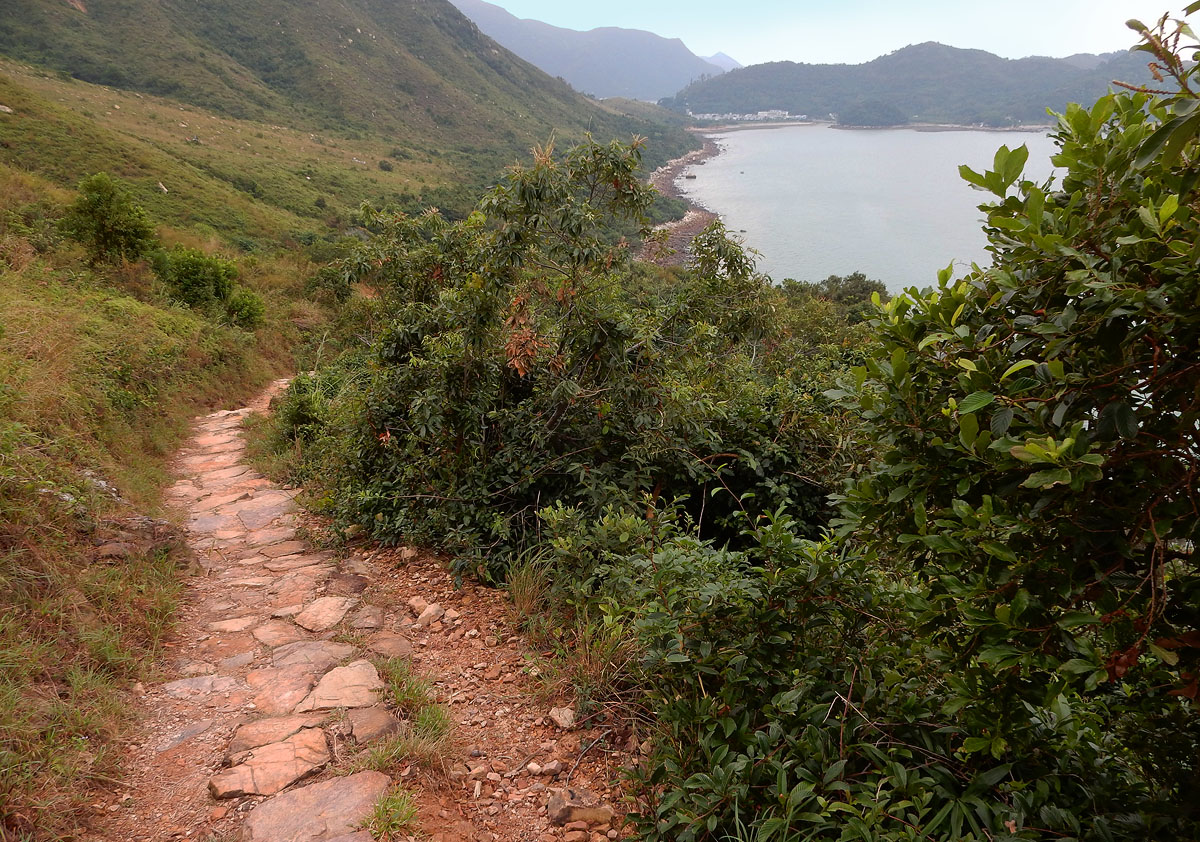 |
|||
| We catch our first glimpse of the village of Tai O in the distance. | |||
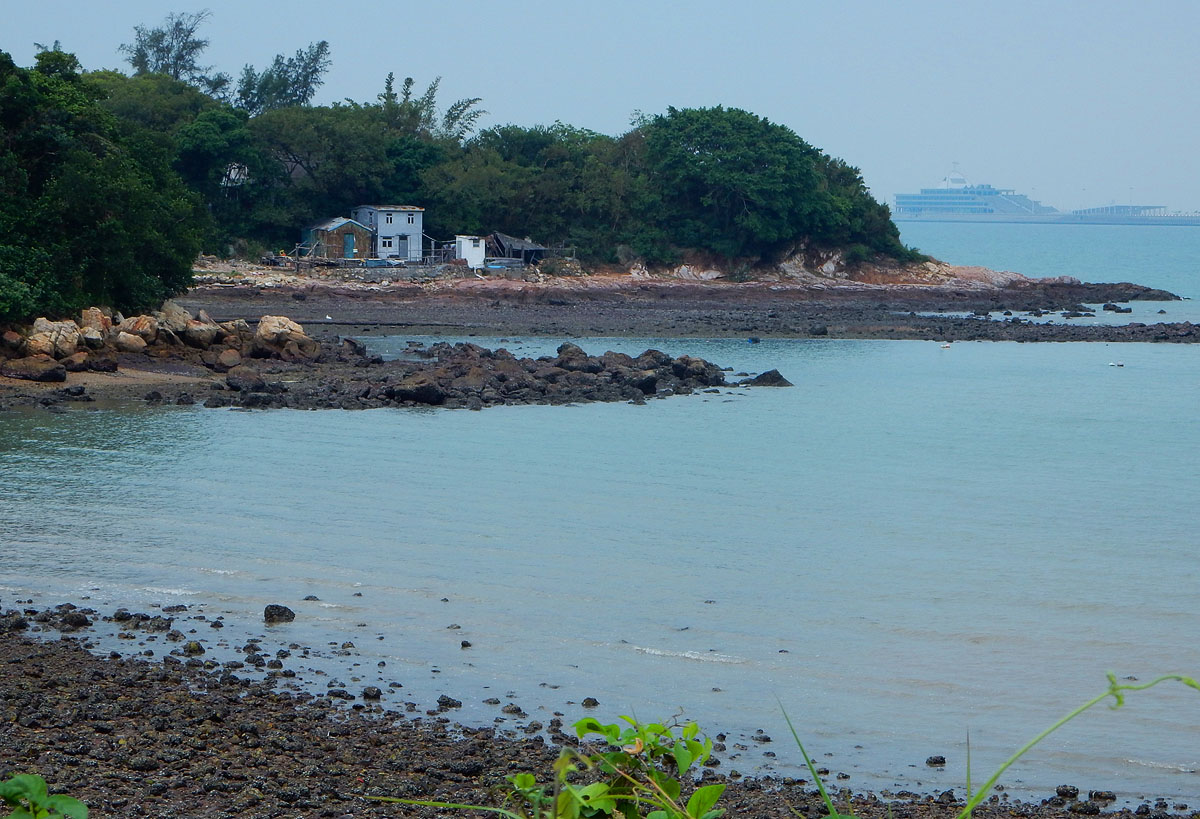 |
|||
| Tai O is actually its own little island, close to Lan Tau. It was a very low tide when I arrived there.
On the right, and in the distance, you can see the Eastern, artificial island of the Hong Kong Macau Bridge. |
|||
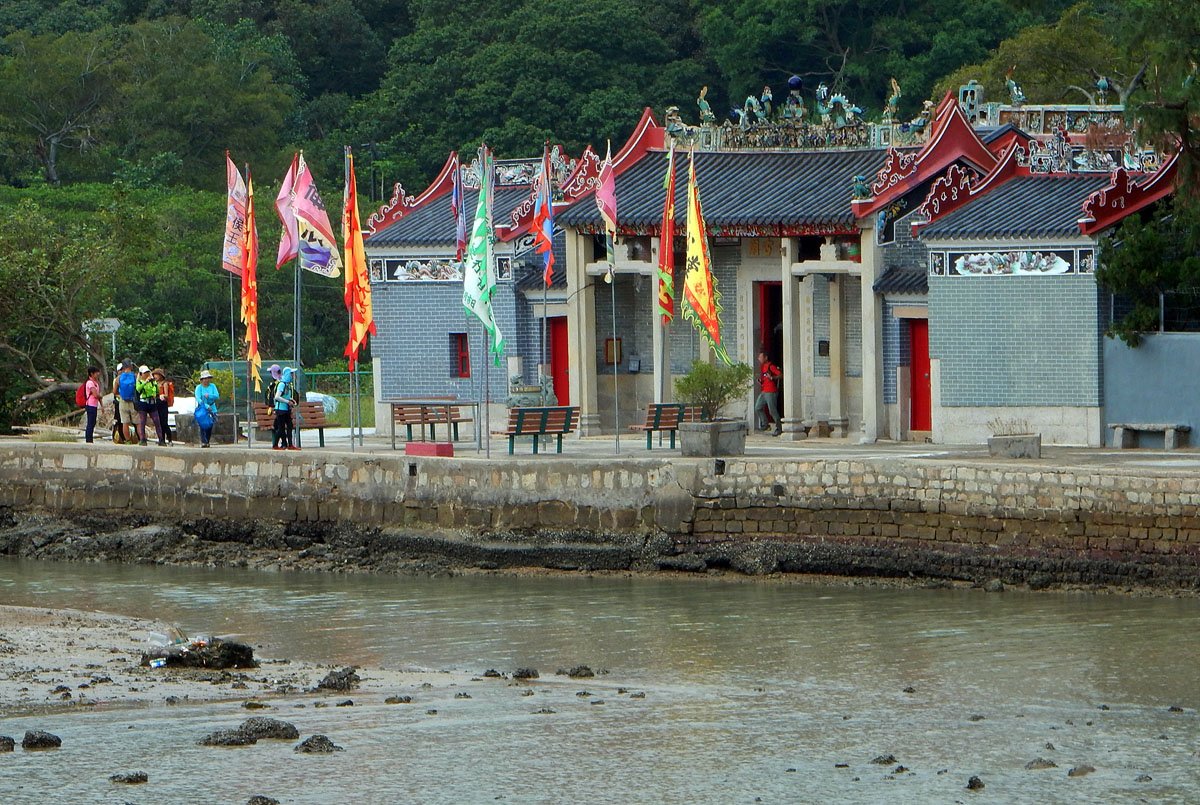 |
|||
| This is the Yeung Hau Temple on the island of Tai O, built in 1699. It was dedicated to a loyal general, Yeung Leung-jit, who protected the last Southern Song Emperor, an eight year old boy, when the young lad took refuge in Kowloon in the 13th Century. The young Emperor was escaping from the Mongols.
There are several of these Yeung Hau Temples in the Hong Kong area, and this one in Tai O may be the earliest built. |
|||
 |
|||
| Many of the houses in Tai O are built on stilts perched over the water. | |||
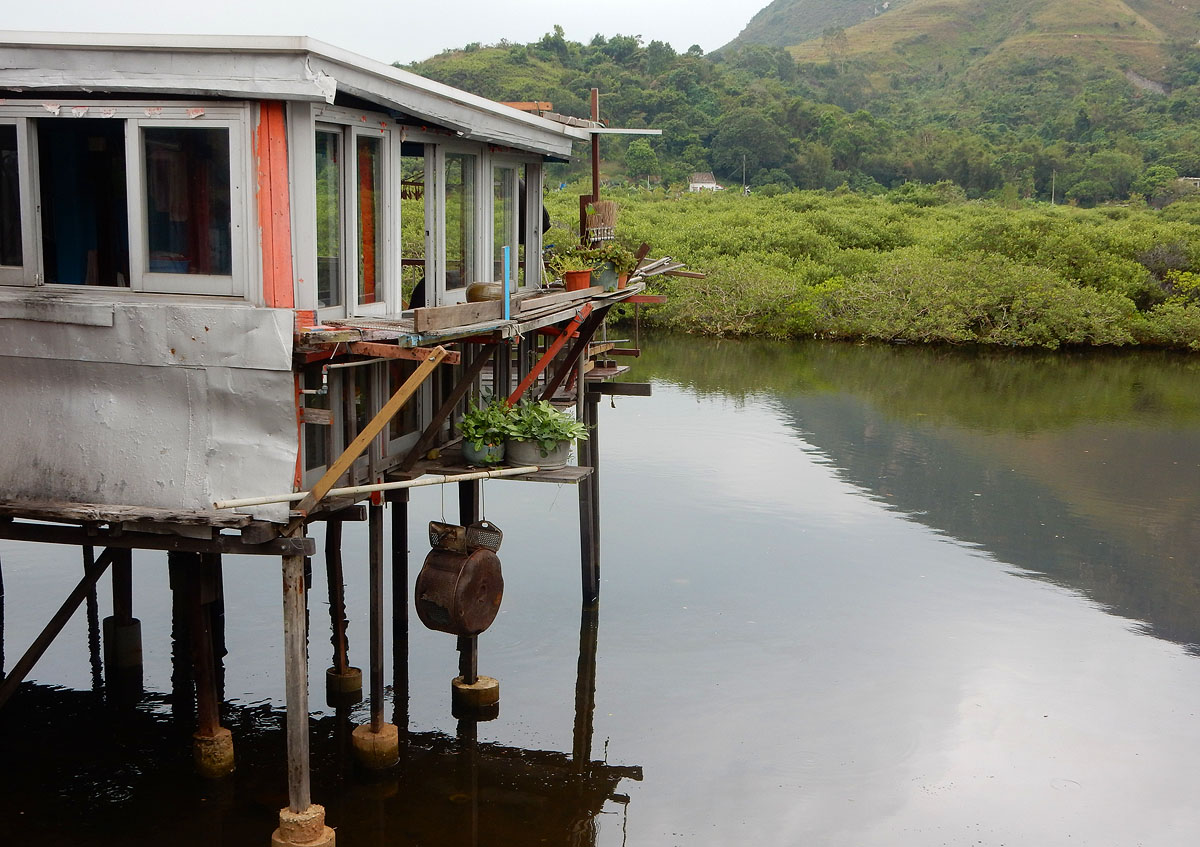 |
|||
| There are mangrove swamps close to Tai O village. In this photo, we are facing North. | |||
 |
||
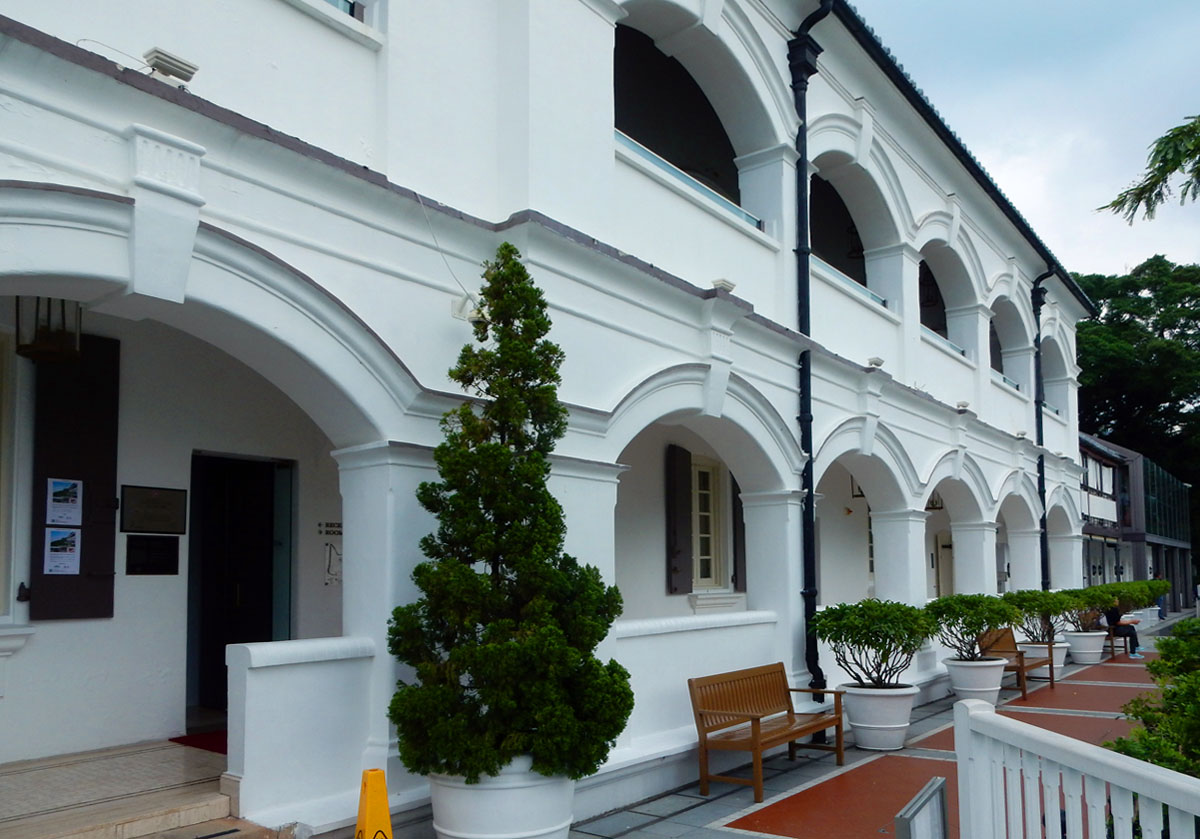 |
|||
| This is the Tai O Heritage Hotel. One reason why it may have been preserved as a Colonial building is because it started life as a Police Station. For some reason, old Police Station buildings in Hong Kong have often been preserved, luckily for us!
This particular building hides a dark secret. In 1918, Sergeant Thomas Glendinning was murdered by Teja Singh, a Sikh constable. Glendinning's widow, Daisy, was left to care for her one year old baby. Singh had also shot at Daisy but missed. However, a bit of wood splintered from a ricochet and blinded her in one eye. At the time, piracy was still a huge problem in Hong Kong, and the Police Station in Tai O had been built to provide support in anti-piracy operations. It was a lonely outpost, without a phone connection to the mainland. |
|||
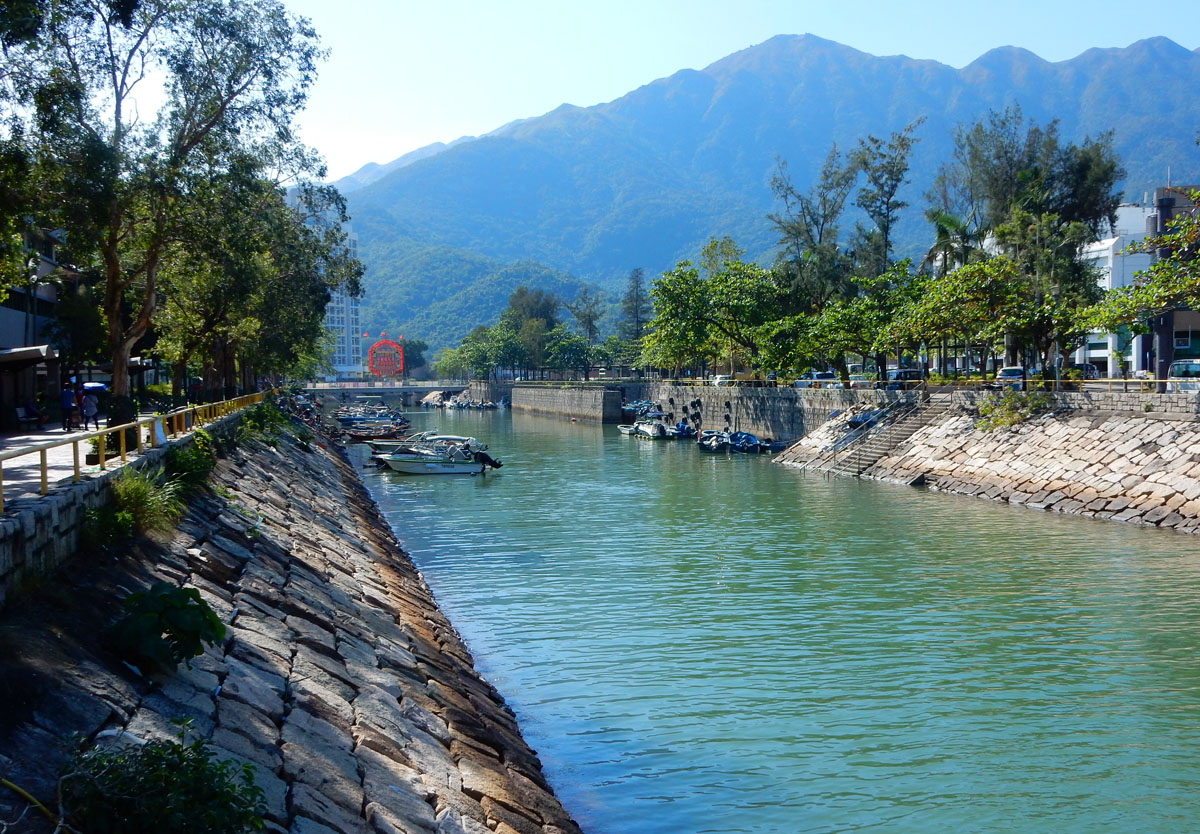 |
|||
| On the Eastern shores of Lan Tau is the old village of Mui Wo. There are regular ferries between Mui Wo and Central on Hong Kong Island. | |||
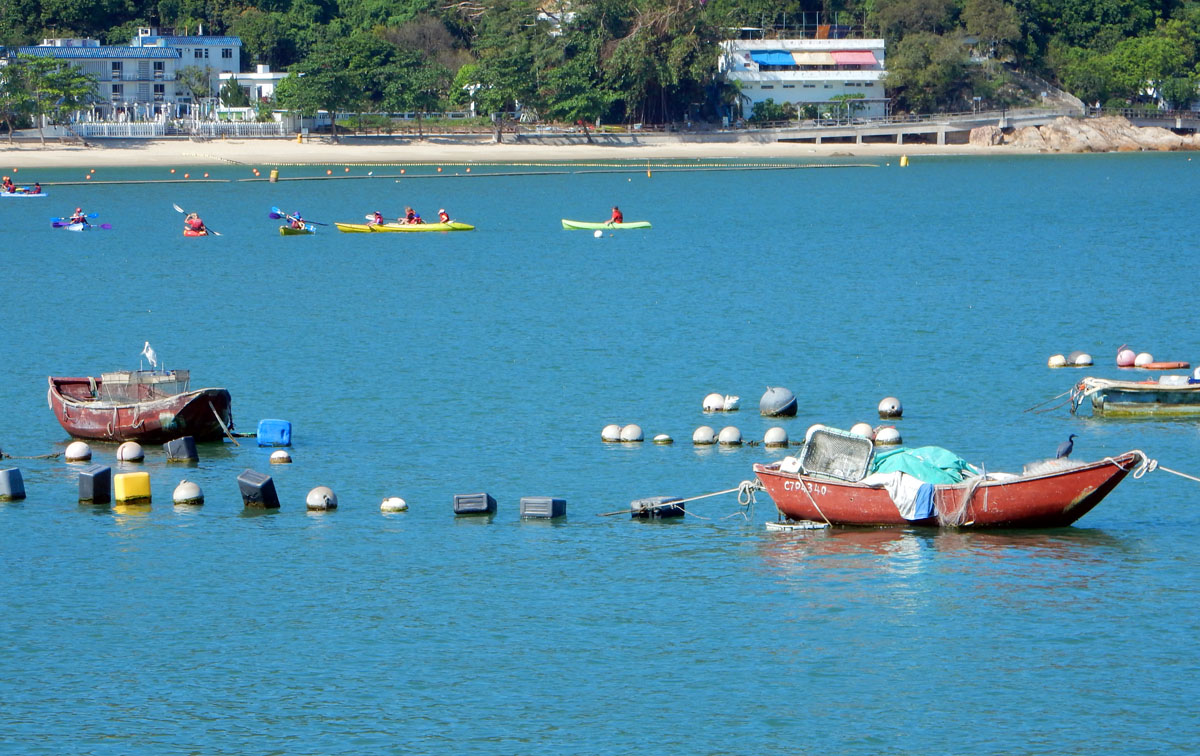 |
|||||
| This is Silvermine Beach at Mui Wo. The name arose because silver had been mined from rivers here for centuries.
I have a sentimental attachment to Silvermine Bay and Beach because my old friend, Alex Huber, and I often came here with our little three man tent on camping and hiking trips. At the time we were with the Air Scouts in Hong Kong, and we were usually responsible for the younger scouts when we went hiking and camping. Alex was the Troop Leader and I was the Senior Patrol leader of the Air Scouts when it was first set up in about 1950. Alex and I often just went off on our own just to escape our Senior responsibilities! |
One particular occasion stayed in my memory. We had pitched our tent close to the beach, which, in the early 1950s, was completely undeveloped. It was unseasonably warm and we decided to go swimming late at night. We had forgotten to bring our swimming trunks but since there seemed to be no one around, we just dived into the warm water naked.
It was pitch dark with no moon, but there was luminescence in the water and we could see little fish swimming around us. Then we saw some little fish jumping out of the water and heading toward the beach. BIgger fish followed them. Alex and I weren't worried about sharks but we were concerned that barracuda could be around. Suddenly, there was an almight crash of gongs and drums and the horizon lit up with flares. Alex and I raced towards the beach and were met by fierce looking women running towards us, brandishing clubs! We thought that somehow we may have broken some local taboo and we were about to be clubbed to death by these women! Instead, the women ran right past us and started hitting the fish that had flung themselves onto the beach. It turned out that the local farmers were also part-time fisherfolk, and this was a traditional method of catching fish. The men would silently row out into the bay, forming a half circle pointing towards the shore. Then they would make a huge racket, above and below the water, and this would drive the fish in panic onto the beach, to be clubbed to death by the women of the village. |
||||
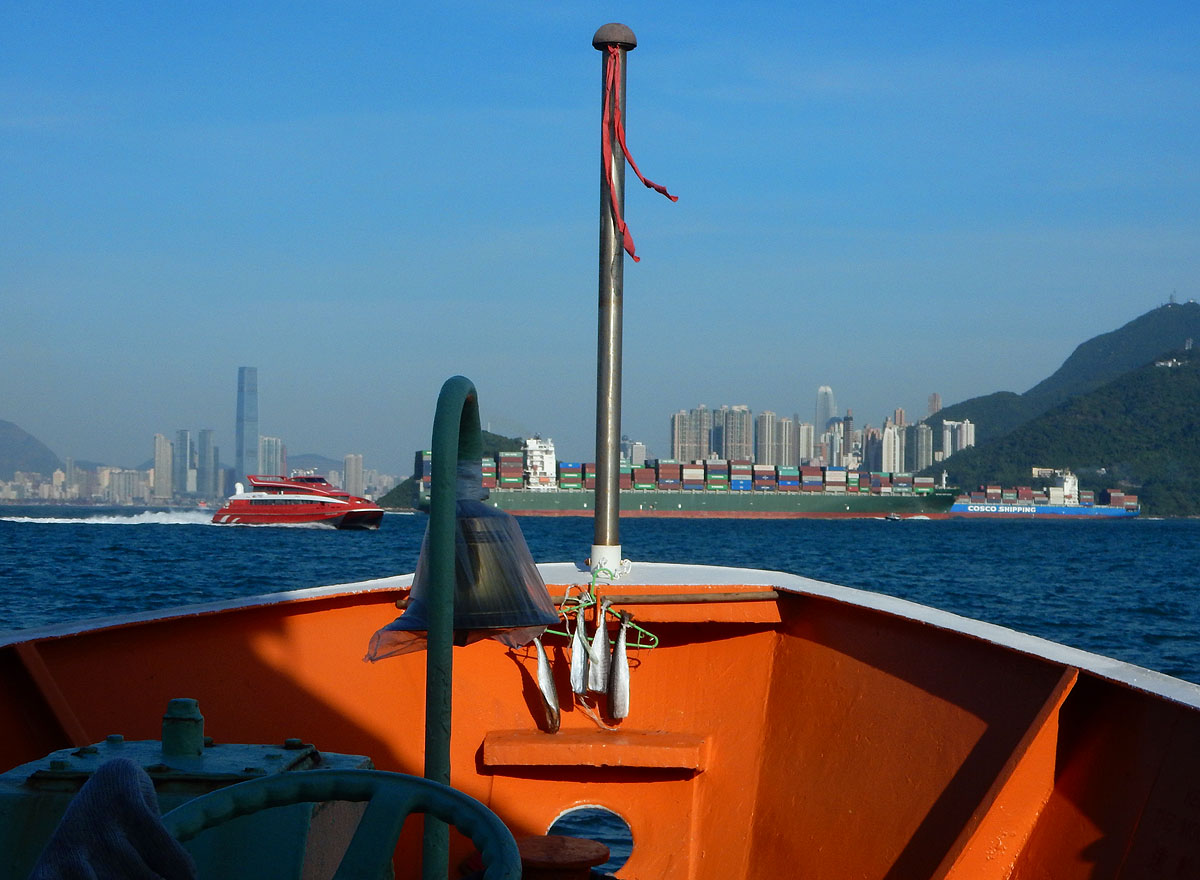 |
|||
| It is always relaxing taking ferries to the various islands of Hong Kong.
In this photo we can see that the sea lanes approaching Hong Kong Island can get a little busy! |
|||
|
To return to the Paintings section of this website, please CLICK HERE
|
|||